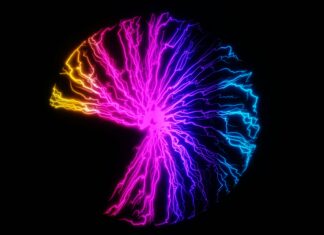Kemono, a term with diverse meanings, evokes images ranging from Japanese folklore to contemporary pop culture. To encapsulate everything you need to know about Kemono, it’s essential to explore its multifaceted dimensions and cultural significance. Here are key aspects that shed light on the various interpretations and applications of the term:
Cultural Roots: Kemono, in its broadest sense, is rooted in Japanese culture. The term translates to “beast” or “animal” in Japanese, but its cultural connotations extend far beyond a literal translation. In traditional Japanese folklore and mythology, Kemono often represents supernatural creatures, spirits, or anthropomorphic beings.
Contemporary Art and Design: In modern times, the concept of Kemono has found expression in various forms of art and design. It is particularly prevalent in the world of manga, anime, and contemporary illustration. Artists often draw inspiration from Kemono themes to create characters that blend human and animal features, resulting in a unique aesthetic that captivates audiences globally.
Anthropomorphism in Kemono: A distinctive aspect of Kemono is the practice of anthropomorphism, wherein human characteristics are attributed to animals or mythical creatures. This anthropomorphic blending of features is a recurring motif in Kemono art, contributing to the creation of characters that embody a fusion of the human and animal realms.
Kemono in Manga and Anime: Kemono has made a significant mark in the world of manga and anime. Numerous manga series and anime productions feature characters with Kemono traits, ranging from animals with human-like qualities to humanoid creatures with animalistic features. This genre often explores themes of identity, transformation, and the coexistence of human and non-human elements.
Kemono as a Fandom: The fascination with Kemono has given rise to a dedicated fandom that appreciates and celebrates art, characters, and stories within this genre. Fans often participate in conventions, online communities, and artistic collaborations centered around Kemono themes. The fandom contributes to the evolution and diversification of Kemono-inspired content.
Kemono in Gaming: The influence of Kemono extends to the gaming industry, where characters with animalistic or hybrid features are prevalent. Games, particularly those with fantasy or mythological themes, often incorporate Kemono-inspired elements, captivating players with imaginative worlds inhabited by anthropomorphic beings.
Cultural Symbolism: Beyond its aesthetic appeal, Kemono carries cultural symbolism, reflecting themes of transformation, spirituality, and the harmonious coexistence of disparate elements. In Japanese folklore, Kemono may represent guardian spirits, mythical creatures, or entities with the power to shift between human and animal forms.
Kemono in Fashion: The distinctive visual style associated with Kemono has influenced fashion trends, with designers incorporating elements of anthropomorphism and animal-inspired aesthetics into their creations. From clothing to accessories, Kemono-inspired fashion reflects a fusion of the whimsical and the avant-garde.
Online Communities and Kemono Creators: The digital age has facilitated the formation of online communities where Kemono enthusiasts and creators converge. Artists specializing in Kemono themes showcase their work on various platforms, fostering a vibrant online ecosystem. These communities serve as hubs for collaboration, discussion, and the sharing of Kemono-inspired art.
Global Impact and Adaptation: While deeply rooted in Japanese culture, Kemono’s impact has transcended geographical boundaries. The global popularity of manga, anime, and Kemono-inspired art has led to a cross-cultural exchange where artists and fans worldwide contribute to the evolution of Kemono themes, adapting and integrating them into diverse creative expressions.
Kemono embodies a rich tapestry of cultural heritage, artistic expression, and contemporary trends. Its evolution from traditional folklore to a global artistic phenomenon underscores its enduring appeal and ability to resonate with audiences across different cultural landscapes.
The term Kemono, deeply ingrained in Japanese culture, has evolved into a multifaceted phenomenon that extends across various artistic mediums and cultural expressions. As it transitions from traditional folklore to modern artistic pursuits, Kemono remains a captivating theme in contemporary manga, anime, and illustration. In the realm of anthropomorphism, Kemono serves as a canvas for artists to explore the synthesis of human and animal traits, creating characters that embody a fusion of both worlds. This aesthetic has become a defining feature in manga and anime, where characters with Kemono attributes often navigate themes of identity, transformation, and the intersection of human and non-human qualities.
The influence of Kemono isn’t confined to the pages of manga or the frames of anime; it extends to the immersive world of gaming. Many video games incorporate Kemono-inspired characters and settings, weaving intricate narratives that transport players to fantastical realms inhabited by anthropomorphic beings. This interplay between the fantastical and the human experience adds a layer of depth to gaming narratives, contributing to the diverse tapestry of virtual worlds.
Beyond the realms of entertainment, Kemono’s impact reaches into the fashion industry. The unique visual style associated with Kemono has inspired designers to incorporate elements of anthropomorphism and animal-inspired aesthetics into their creations. From runway fashion to streetwear, Kemono-inspired designs offer a blend of whimsy and avant-garde expression, reflecting the adaptability and influence of this cultural phenomenon.
Culturally, Kemono carries symbolic significance, often representing themes of transformation, spirituality, and the harmonious coexistence of disparate elements. In Japanese folklore, Kemono entities may take on the role of guardian spirits or mythical creatures capable of shifting between human and animal forms. This symbolism adds layers of meaning to the artistic representations and narratives inspired by Kemono.
The fandom surrounding Kemono plays a pivotal role in shaping its trajectory. Enthusiasts gather in conventions, online communities, and collaborative projects, fostering a sense of community and shared appreciation. This global community of fans and creators contributes to the evolution of Kemono-inspired content, with artists experimenting with styles, narratives, and interpretations that reflect the diverse perspectives within the fandom.
The digital age has propelled Kemono into the online sphere, where communities and creators thrive on platforms dedicated to showcasing and discussing Kemono-inspired art. This digital ecosystem serves as a hub for collaboration, providing a space for artists to share their work, engage in discussions, and participate in the ongoing evolution of the Kemono aesthetic.
While deeply rooted in Japanese culture, Kemono’s influence has become a global phenomenon. The global popularity of manga, anime, and Kemono-inspired art has led to a cross-cultural exchange where artists and fans worldwide contribute to the continuous adaptation and integration of Kemono themes into diverse creative expressions. This adaptability and resonance across cultures highlight the enduring appeal of Kemono as a cultural phenomenon that transcends geographical boundaries.
In conclusion, Kemono represents a dynamic interplay between tradition and contemporary expression, weaving together cultural symbolism, artistic exploration, and a global community of enthusiasts. Its journey from traditional folklore to a global artistic phenomenon underscores its ability to evolve, adapt, and captivate audiences across different cultural landscapes, making Kemono a rich and enduring facet of creative expression.


















